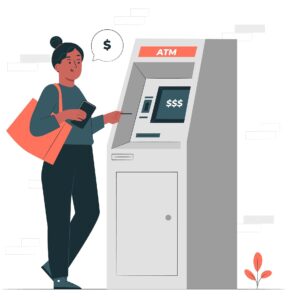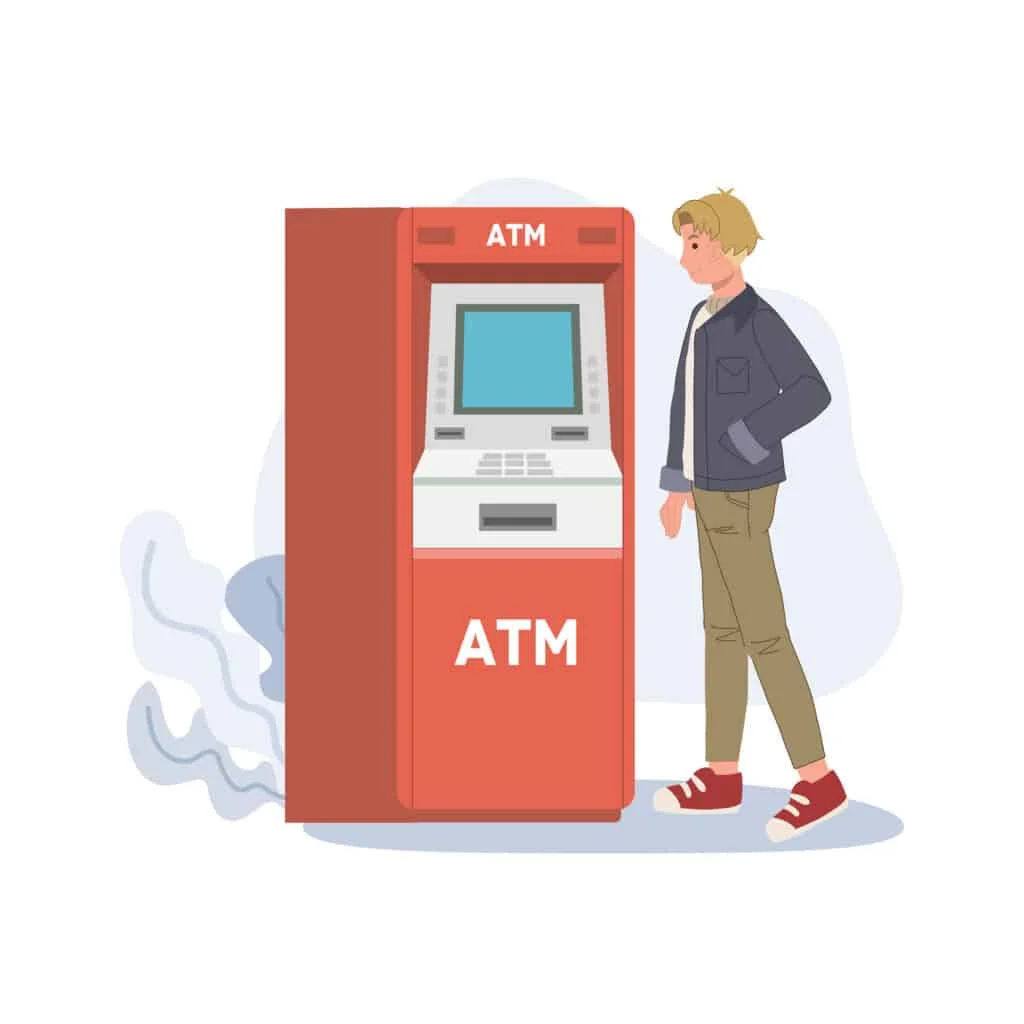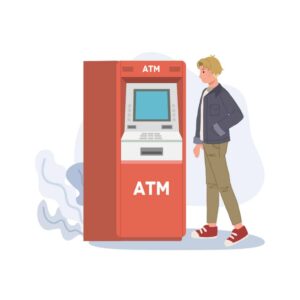The landscape of ATM machine costs presents a dynamic and complex picture for business owners and financial institutions. As technology continues to evolve, understanding the key ATM pricing factors becomes crucial for making informed investment decisions. With advancements in software and hardware, transaction volume impacts, and regulatory requirements, the cost of ATMs now demands a strategic approach. We aim to shed light on these elements to help businesses navigate this intricate market.

Grasping the nuances of ATM machine cost can lead to significant advantages. From choosing the right location to selecting compatible vendors, each decision influences the bottom line. Entrepreneurs and retail managers should prioritize understanding these factors to ensure optimal returns. By delving into the top five factors affecting ATM costs, we offer insights that empower stakeholders to make better choices. Stay with us as we explore technological innovations, transaction dynamics, and more, guiding you through the complexities of today’s ATM market.
Technological Advancements
Technological advancements are significantly impacting ATM machine costs. As technology evolves, ATMs are no longer just cash dispensers but comprehensive financial service hubs. Incorporating cutting-edge technology such as contactless transactions, biometric authentication, and enhanced user interfaces leads to increased initial investment. These advancements not only improve customer experience but also drive up the atm machine cost as manufacturers incorporate sophisticated features that require both hardware and software upgrades.
Software and hardware upgrades play a crucial role in determining ATM pricing. For example, integrating advanced processors and memory enhancements ensures smoother and faster transactions, which can be a critical factor in high-demand areas. Similarly, software updates that support seamless connectivity with mobile devices or enable real-time data analytics add value but come at a cost. Businesses must weigh these costs against potential benefits such as increased transaction efficiency and improved customer satisfaction.
Security remains a top priority for ATM operators, and new security features significantly influence costs. Enhanced encryption protocols, anti-skimming technologies, and video surveillance systems are essential to protect against fraud and cyber threats. While these security measures increase the upfront and ongoing costs of ATMs, they are crucial in maintaining customer trust and complying with regulatory standards. As technology advances, it is vital for businesses to assess their specific needs and location demand for ATMs to ensure they invest in the right level of security features without overextending their budgets.
Transaction Volume
Transaction volume plays a significant role in determining ATM machine costs. High transaction frequency can lead to increased revenue, offsetting the initial investment and ongoing maintenance costs. In contrast, low transaction volume may result in higher per-transaction costs, making it challenging to justify the expenses associated with purchasing or leasing an ATM. Business owners and financial institutions must carefully evaluate the expected transaction volume at a location before making decisions about ATM deployment.
Conducting a cost-benefit analysis is crucial when considering high vs. low volume locations. High-volume areas, such as shopping malls or busy commercial districts, typically offer more opportunities for transactions, leading to a quicker return on investment. However, these locations often come with higher lease costs for space and increased competition. Conversely, low-volume locations may have lower operational costs but could struggle to cover the purchase or lease expenses of the ATM. Entrepreneurs should weigh these factors carefully to make informed decisions that align with their financial goals.
To maximize transaction volume, several strategies can be employed. First, strategic placement is key; positioning ATMs in areas with high foot traffic can significantly boost usage. Additionally, offering value-added services such as bill payments or mobile top-ups can attract more users. Implementing marketing initiatives, like loyalty programs or promotional discounts for frequent users, can also encourage repeat transactions. By optimizing transaction volume, businesses can enhance profitability and ensure that their ATM investments yield favorable returns.
Location Demand
Location plays a crucial role in determining ATM machine costs. High-demand areas, such as bustling urban centers or popular retail hubs, often command higher installation and operational expenses. These areas offer increased transaction volume potential, justifying the initial investment. However, they may also require advanced security features in ATMs to deter theft and vandalism, impacting overall costs. Conversely, installing ATMs in underserved regions might lower upfront costs but could result in fewer transactions, necessitating a careful cost-benefit analysis.
High-demand areas offer clear advantages, but the competition can be intense. Businesses must weigh the benefits of high foot traffic against the increased costs of leasing space and maintaining more sophisticated ATM features. For instance, an ATM located in a busy shopping mall may incur higher operational costs due to extended hours and enhanced security measures. On the other hand, placing ATMs in underserved regions might involve lower setup costs and lease rates, but businesses must ensure there’s enough demand to justify their presence.
Conducting thorough market research is essential for choosing the optimal location for an ATM. This includes analyzing local demographics, foot traffic patterns, and existing ATM coverage. By understanding these factors, businesses can identify lucrative opportunities while avoiding oversaturated markets. Comparing different locations’ potential transaction volumes and associated costs will guide informed decisions. Ultimately, selecting the right location can maximize profitability and enhance customer convenience, making it a critical factor in managing ATM machine cost effectively.

Maintenance and Operational Costs
Understanding the operational costs of ATMs is crucial for any business or financial institution considering their deployment. Regular maintenance expenses form a significant portion of these costs. These include routine inspections, repairs, software updates, and cash replenishment services. For instance, an ATM in a busy urban location may require more frequent servicing due to higher transaction volumes, leading to increased maintenance costs. Additionally, unforeseen issues such as vandalism or technical malfunctions can also drive up expenses.
Regular servicing and updates are vital for ensuring ATMs operate efficiently and securely. As technology evolves, so do the methods employed by cybercriminals. Therefore, keeping software updated with the latest security patches is not just a compliance measure but a necessity to protect both the machine and its users from potential fraud. Moreover, outdated hardware can lead to increased downtime and customer dissatisfaction, impacting the business’s reputation and revenue. Businesses should prioritize a proactive approach to maintenance to avoid these pitfalls.
When evaluating the costs between leasing and purchasing ATMs, it’s important to consider both immediate and long-term implications. Leasing may offer lower initial expenses and provide access to the latest models without a large upfront investment. However, over time, lease payments can add up, potentially surpassing the cost of ownership. On the other hand, purchasing an ATM involves higher initial costs but can be more economical in the long run if managed properly. Businesses should assess their financial strategies and operational requirements to determine the most cost-effective option in line with market trends in ATMs.
Regulatory Compliance
Regulatory compliance plays a crucial role in determining ATM machine costs. Financial institutions and business owners must adhere to a myriad of legal requirements that govern the operation of ATMs. These regulations often cover areas such as accessibility, security standards, and data protection. For instance, compliance with the Americans with Disabilities Act (ADA) mandates specific design features to ensure accessibility for all users, including those with disabilities. Adhering to these legal standards can increase initial setup costs but is essential to avoid potential fines and penalties.
Compliance upgrades and regular audits represent significant expenses in the lifecycle of an ATM. As regulations evolve, ATMs may require software updates or hardware modifications to meet new standards. This could involve integrating more advanced security measures or updating user interfaces to enhance customer experience and compliance. Additionally, regular audits are necessary to ensure ongoing adherence to these regulations, further impacting atm machine cost. Businesses should budget for these expenses as part of their overall operational plan to maintain regulatory compliance.
The dynamic nature of regulatory environments directly affects ATM pricing. As governments introduce new laws or revise existing ones, financial institutions and retailers must be prepared to adapt quickly. For example, recent updates in cybersecurity legislation have led to increased investment in encryption technologies and fraud detection systems for ATMs. These enhancements, while beneficial in protecting consumers, add to the overall atm machine cost. Staying informed about regulatory changes is vital for businesses to remain compliant and manage costs effectively.
Understanding these regulatory factors allows businesses to plan strategically for ATM-related expenses. By anticipating compliance costs and incorporating them into their financial planning, business owners can make informed decisions about ATM investments. This foresight not only helps in managing current expenditures but also ensures that ATMs remain compliant with evolving legal standards, safeguarding both the business and its customers.
Vendor Relationships
Selecting the right vendor is crucial in determining the overall cost of ATM machines. Vendors offer different pricing models, support services, and equipment quality, which can significantly influence the total expenditure. Business owners and financial institutions should assess vendors based on their reputation, reliability, and the breadth of their service offerings. For instance, a vendor that provides comprehensive maintenance and support services might initially charge more but could save costs in the long run by reducing downtime and repair expenses.
When comparing different ATM providers, it’s important to evaluate their product features and capabilities. Some vendors may offer advanced ATMs with state-of-the-art security features or enhanced transaction speed, which could justify higher costs for high-traffic areas. Others might focus on providing budget-friendly options suitable for low-volume locations. Retail managers and entrepreneurs should weigh these options against their specific business needs and customer expectations to find the best fit.

Negotiating contracts with vendors can also lead to better pricing and terms. Engaging in negotiations with multiple vendors allows businesses to leverage competitive offers to secure favorable conditions. For example, securing a volume discount or a flexible payment plan could significantly reduce initial investment costs. It’s beneficial to establish clear communication with vendors about service expectations and potential future upgrades to avoid hidden fees or unexpected expenses. By fostering strong vendor relationships, businesses can ensure they are receiving the best value for their investment in ATM technology.
Conclusion: Navigating ATM Machine Costs
Understanding the key factors influencing ATM machine costs is crucial for making informed decisions. Technological advancements drive costs through software and hardware upgrades. Transaction volume impacts overall expenses, with high-frequency locations offering potential cost benefits. Location demand also plays a role; high-demand areas may require higher investments, while underserved regions offer opportunities for growth. Maintenance and operational costs necessitate regular servicing and updates, affecting whether to lease or purchase. Regulatory compliance requires attention to legal requirements and adapting to changing regulations. Vendor relationships influence pricing through provider selection and contract negotiations.
Select the right ATM by evaluating these factors carefully. Consider the technological needs, location demands, and ongoing maintenance commitments. We recommend staying informed about market trends to capitalize on emerging opportunities and navigate regulatory changes effectively. By focusing on these elements, you can optimize ATM investments and ensure long-term success.
Working with United Banc Card of TN
If you find yourself wanting to conquer your restaurant, retail shop, look no further than United Banc Card of TN. With their innovative solutions and trusted POS System services, they will guide you towards financial success. Whether you are a small business owner or an individual looking to manage your finances better, United Banc Card of TN has the tools and expertise to help. Call us today @615-476-0255


